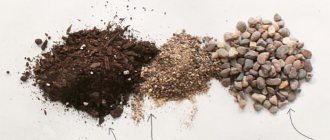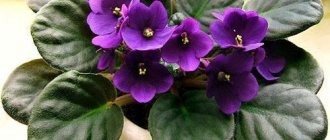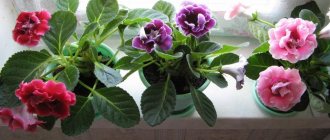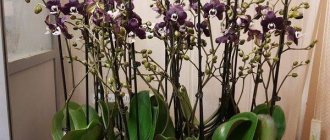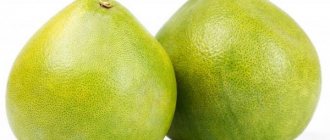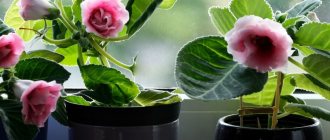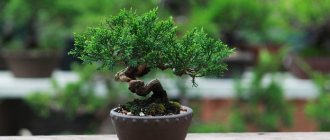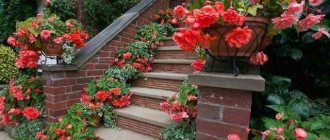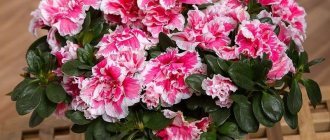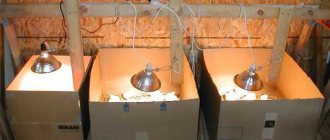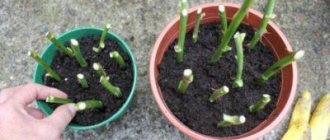Category: Succulents, Care Published 01/29/2019 · Comments: · Reading time: 13 min · Views: 10,947
The word “succulent” translated from Latin means “succulent”, so the plants were named due to their unique ability to store moisture and use it sparingly during long droughts. As a rule, such representatives of the plant world do not have the most beautiful, but very original appearance, are very tenacious and unpretentious, which attracts even more attention to them from flower growers. And many plants have already successfully adapted to indoor conditions.
Despite the variety of species and different origins, caring for succulents has certain similarities, and in order for an unusual pet to feel good and look the part, it is worth taking into account its special needs.
General information about succulents
Most often, succulents are found in the arid regions of the tropics of Africa, South America, and tropical islands, where it is almost impossible for vegetation to exist without the ability to retain as much water as possible and manage it carefully. Such plants, to one degree or another, tolerate high temperatures and sudden changes well, and are also adapted to grow in poor, rocky soils.
This is interesting! Often all succulents are mistakenly classified as cacti. In fact, cacti are one of the varieties of succulent plants and not all succulents are cacti.
Nature has provided “succulent” plants with special tissues in which moisture accumulates and remains, which helps them survive even in very dry climates.
Succulents are divided into two types: leaf and stem, but it is worth considering that this is a conditional division.
Growing succulents at home
Today in stores you can see and purchase seedlings of home flowers and fruit plants for almost every taste, and sometimes the choice is such that your eyes just run wild. In garden stores and large hypermarkets, there are long rows of arrowroots, violets, orchids, citrus fruits, various palm trees, predator plants, succulents in pots of different diameters... However, it is the latter that will be discussed.
Beauty gasteria
Despite the huge variety of beautiful flora available for sale, many house plant lovers are attracted to succulents, and I am one of them. Few people know absolutely nothing about succulents, for example, cacti, money tree (crassula) or aloe are very common residents on our windowsills.
baby aloe
However, in addition to the well-known and beloved cacti, succulents also include many different original and sometimes quite unusual-looking plants: living stones (lithops), haworthia, prickly pear, gasteria, asparagus (asparagus), oxalis and many others.
Stem succulents
In stem plants, the shoots have thickenings made of special tissue, which contain a supply of water. This can be seen by looking at cacti or milkweeds, which are also the most common indoor stem succulents.
Such succulents often lack foliage or have reduced foliage. In a number of plants it has turned into spines, which bring more benefits to the flower than the usual leaves. Pointed, modified leaves not only protect the plant from being eaten by herbivores, but also prevent the evaporation of valuable water. And besides, in this form the foliage does not require much moisture and it is stored in the trunk.
General description and main varieties of succulents
A unique feature of succulents is that they are able to accumulate liquid in the tissues of the stems and modified leaves.
The name of the plants comes from the Latin word succulentus (abundant with juices); moisture and mucus accumulate in their succulent leaves, so they can do without watering for a long time:
- aeonium and cotyledon, synadenium and pachyphytum;
- fucaria and portulacaria, conophytum and boviea;
- pedaoanthus and adromiscus, jatropha and argyroderma;
- pyaranthus and albuca, hatiora and monanthus;
- apthemia and brinamia, euphobia and lithopus.
A general description of succulents allows them to be distinguished from other plants, and they can be leafy or stem-based.
Most often, these flowers grow in dry soil and do not need frequent watering; with good care, they retain their visual appeal for a long time and can be grown in a flower bed.
Leaf succulents
In plants of this variety, another terrestrial part is strengthened - foliage, which has the necessary tissues for collecting and storing water resources. Their leaves are thick, fleshy, filled with juice or juicy pulp. The most popular leaf succulents grown at home are aloe, kalanchoe, haworthia and echeveria. Very interesting representatives of the plant world are lithops, they are also called “living stones.” These succulents really look like pebbles and consist of two leaves.
The leaves of some succulent flowers are covered with a grayish coating. It protects foliage from scorching sun rays and rapid moisture consumption. Others have leaf blades or trunks with fine pile, which also copes well with similar functions.
This is interesting! Some families contain only one or two genera of succulents. For example, among the Araceae family it is Zamioculcas, among Bromeliads it is Dikia, and among Grapeaceae it is Cissus quadrangularis.
In extreme situations, when a plant is left without water for a long period, its above-ground part dies, giving up all the moisture to the more valuable part - the rhizome. The roots of the succulent remain alive and at the first rain/watering, they sprout. Such a “rebirth” is provided for by nature itself.
Knowing all the useful information about succulents, you can better understand the characteristics of these plants, and most importantly, choose the appropriate care and living conditions that will benefit your exotic pet.
Temperature and humidity
Succulents like moderately humid air, but they also tolerate dry air. It is not recommended to irrigate their leaves with a spray bottle; such a procedure can cause the flower to rot.
In hot weather or when heating appliances are running, you can use a humidifier or place an aquarium or other water tank in the room. But it is possible to do without these measures, especially since high humidity can harm exotic vegetation.
In the warm season, it is recommended to take flower pots out into the fresh air and do not forget to ventilate the room. Some varieties, once on a loggia or balcony, not only begin to grow actively, but also bloom. Just don’t let the succulent stand in a draft. Temperature changes in this vegetation are not terrible; this applies to both daytime and nighttime changes:
- summer optimal air temperature during the day is +25 +30 degrees, at night - +15 - +18 degrees;
- winter daytime - +15 - +20 degrees, night - +13 - +15 degrees.
During the winter dormancy period, many succulents prefer to be cool, at a temperature of +13 - +10 degrees. But it is worth taking care of the stability of the temperature regime, since lowering the thermometer to +5 degrees or lower can lead to freezing of the flower.
Lighting
In their natural environment, these tropical inhabitants are accustomed to an abundance of light, so at home they should be provided with good lighting. You can place pots with succulents on the windowsill of a south-facing window, however, during the midday summer heat it is better to shade them.
Only an acquired plant, as well as one that has “overwintered” in the cool, is gradually accustomed to the bright rays of the sun.
For many leaf succulents, foliage color depends on whether they receive enough sunlight. Thus, in Echeveria agave, red-colored sedum and Echeveria pulidonis, a red tint appears only with sufficient sunlight.
Soil requirements
While most common leafy flowering plants do well in rich, nutritious soil, succulents do not thrive in such a soil environment. In a dense substrate saturated with organic matter, they get sick, rot and die.
It's all about their slow growth, often the annual growth is no more than 1 cm, and the abundance of food will artificially speed up the process. The soil should be as similar as possible to the one in which succulents grow in nature: this is desert soil containing a lot of sand, stones, infertile soil, and does not contain nitrogen.
You can purchase a similar soil mixture for succulents and cacti at a flower shop, or prepare it yourself, following the requirements of the plant:
- the soil should be loose and dry quickly;
- allows air to pass through well and does not retain moisture;
- have a rough, rocky texture.
To prepare the mixture with your own hands, certain components are required; the pot is filled as follows:
Drainage
A layer of drainage material is placed at the bottom of the pot, which helps remove excess moisture and prevents stagnation. Depending on the type of flower, it can occupy from 1/3 to 1/6 of the volume of the entire tank. This can be brick or stone chips, small pebbles, expanded clay, pieces of foam plastic.
Middle layer
Mix 1 part of ordinary garden soil and humus, add 2 parts of sand with coarse fractions and 0.5 parts of charcoal. To make the mixture looser, pebbles, coconut substrate, and sphagnum moss are added to it.
The soil is poured into the prepared container so that at least 1.5-2 cm remains from the edge.
Upper drainage
It is recommended to lay drainage on top of the soil, which is removed before watering. This can be brick chips, small pebbles, perlite or expanded clay. After watering, it is laid out in a reverse 1-1.5 cm layer.
Experienced gardeners who grow succulents do not recommend preparing soil mixtures from peat and similar materials. They retain water, which stagnates and harms the plant.
It is important! Not all epiphytic succulents that grow in nature on tree branches and trunks are suitable for soil mixtures intended for succulents and cacti. Some types of epiphytic flowers need an epiphytic substrate, that is, you can use a mixture for epiphytic orchids.
To eliminate the possibility of pathogenic microbes penetrating the soil, it is recommended to disinfect the ingredients used, especially for materials picked up on the street. Sand and soil can be kept in the oven for 1.5-2 hours at a temperature of 180-220 degrees. The drainage is washed with plenty of water and soaked in a solution of potassium permanganate for several hours. Afterwards it is recommended to dry it in the oven.
Watering mode
When growing such exotic plants, it is important to know how to water them; succulents are quite scrupulous in this matter. Overwatering is more harmful to these flowers than drought, and the regime largely depends on the season:
- when wintering flowers in warm conditions, they are watered twice a month, but if the plant is in the cold, then one watering per month or even less often is enough;
- in the spring-summer period, plants begin to grow actively, so they require more frequent watering - once a week;
- by autumn the frequency of these procedures gradually decreases;
- if the regime is followed, succulents are watered abundantly so that all layers of the soil become moist;
- The next application of water will be required when the soil is completely or partially dry.
As with other flowers, settled water at room temperature is used for watering succulent plants. If the environment allows, you can water them with rain or melt water.
It is important! A pot for succulent plants should have drainage holes and a tray to drain excess water. Any moisture that has accumulated in it should be removed.
Why do you have to compose the soil yourself?
Peat is an organic matter that is biodegradable by soil fungi, bacteria and blue-green algae. This is not suitable for succulents at all.
Succulents grow in the desert, and the best soil for them is dry dust, clay, stones and sand.
. These are subtrates with a low organic content and without dampness. They do not contain peat or other rich sources of organic matter.
Under no circumstances should you plant succulents in purchased peat-based soil, even if it is called “Special soil for desert cacti.” That is why, if you want not to ruin another plant, you will have to work with the soil yourself. Actually, it's not difficult.
Constantly moist organic substrates (peat in a spacious pot and with good watering) are a natural habitat for soil microflora, fungi and bacteria.
Succulents in their natural habitats do not encounter the presence of soil microflora in the substrate and therefore have absolutely no immunity to it
. Their roots in your house die from ordinary soil microorganisms that are harmless to other plants.
To grow succulents you need soil that dries out very quickly.
.
Peat and soils based on it take a very long time to dry out due to the high water-holding capacity of peat. If such soil is dry, it is extremely difficult to wet it back: the water simply flows down the walls of the pot without reaching the roots. This soil needs to be watered regularly, without drying it out. And for succulents, regular drying of the earthen coma is the main measure to prevent rotting.
Ordinary outdoor forest or garden soil mixed with coarse sand is best suited for succulents.
Coarse sand is available in the supply section of pet/aquarium stores. There is no need to heat or steam the soil and sand. It is also not necessary to spill the soil with potassium permanganate, because potassium permanganate is a strong oxidizing agent that worsens the chemical properties of the soil.
How and with what to fertilize succulents?
Despite the modest needs of these plants, caring for succulents at home also includes fertilizing. They are usually fed with mineral compounds, which can be purchased at any flower shop. You can adhere to the following recommendations:
- In winter, resting succulent plants should not be fertilized;
- They begin to fertilize in the spring, but not more than once every 4 weeks;
- Nutritional concentrates need to be diluted in a smaller dosage than recommended;
- fertilizers for succulents should contain a small amount of nitrogen, its excess in the soil causes rotting of the rhizomes;
- it is better to choose fertilizers that contain potassium and phosphorus as the first ingredients;
- nutrient solutions are added after thoroughly watering the flower, this will eliminate the possibility of burns.
A deficiency of certain elements negatively affects the appearance of plants; they become weak, grow more slowly and do not flower. The following symptoms also occur:
- growth cessation occurs when there is a lack of many components, most often nitrogen;
- The rhizome develops poorly if there is not enough calcium in the soil;
- symptoms of chlorosis occur, in which there is a disruption in the formation of chlorophyll in the foliage and a decrease in the activity of photosynthesis - due to calcium deficiency;
- the buds that appear dry and fall off, then the growing points die off - the flower does not have enough iron;
- the foliage loses its bright color, the succulent does not begin to bloom - perhaps we are talking about magnesium deficiency;
- Too active detching is associated with a lack of zinc.
Experienced gardeners warn that you should not feed succulents with natural organic matter (manure, droppings). They can cause “obesity” in the flower and stimulate unnaturally rapid growth of the aerial part.
The most successful examples of indoor succulents
What kind of succulents can you “start” at home? To solve this, you need to take a closer look at each of these unusual plants, find out its preferences and evaluate the amount of space in the apartment, because in addition to dwarf forms, among them there are real giants who are unlikely to like it in a cramped pot on the windowsill.
We will not dwell in detail on the description of various cacti; only their various forms can be devoted to an entire article, and more than one. We will not mention such well-known and beloved indoor plants from this section as aloe, kalanchoe, zamioculcas, crassula and euphorbia - they are found in almost every home.
Let's talk today about other, more exotic, but no less interesting succulents for home growing. And there are many of them - take a closer look, what an unusual beauty!
| Succulent | Characteristics |
| Lithops . “Living stones,” as these plants are often called, are truly similar to natural minerals. Externally, they are small, low, rounded formations of various “camouflage” colors - from gray-green to yellowish and reddish. These are strongly thickened fused leaves up to 5 cm in height, separated by a shallow gap, from which a peduncle and new leaves later appear (every year a pair of leaves is replaced by a new one). Lithops flowers are white or yellow (occasionally orange), up to 3 cm in diameter, sometimes fragrant; in cultivation, lithops blooms in August-November. | |
| Aeoniums . Imagine a double rose or aster flower sitting directly in the ground, only with thick, fleshy, flat scales of leaves instead of petals - this is what most representatives of this genus look like. Moreover, these “roses” can be of various colors - green, red, burgundy, yellow, pink and even two-colored, and the leaves-petals can be both pointed and rounded. | |
| Guernia (hernia) . These low-growing perennials are still rare in our apartments, although they are very decorative. The plant is a branched bush of several thick ribbed stems covered with soft “spines” or wide teeth. The color of the shoots varies from light green to deep brown. But the main advantage of all guernias is their large five-lobed star flowers, very beautiful and bright, the color of which can be either monochromatic or very contrasting - speckled or striped. The only drawback is that many of them have a carrion smell that is not very pleasant to humans. | |
| Haworthia . These miniature plants form rosettes of fleshy, pointed leaves, which are its main decorative advantage compared to small white flowers. Haworthia leaves can have jagged or smooth edges, dark and soft green, and even have a white “convex” transverse stripe. In many species, at the tops of the leaves there are transparent areas called windows, allowing light to penetrate deep into the tissues. | |
| Monantes . This unusual succulent looks like a collection of small green “cones” with succulent scales, collected in a dense curtain. During flowering, long peduncles with small yellow flowers appear above the carpet of “cones”. However, there are other species of the genus - shrubs 15 cm tall with thick lobed leaves, squat succulent rosettes like juveniles with green flowers, etc. | |
| Hathiora . This genus includes plants with cylindrical, branched, articulated shoots that resemble either corals, or bones, or small bottles. In indoor culture, the most common plant is Hatiora salosa, with thin segmented shoots and bright yellow-orange flowers that bloom in winter and spring. In an apartment it is often grown as an hanging plant. | |
| Echeveria (echeveria) . People also call them “stone flowers” or “stone roses”. These herbaceous perennials also produce dense basal rosettes of succulent, thick leaves in varying shades of green. Along with indoor varieties, there are also large echeverias that can easily be placed in your garden. At home, they usually bloom in spring or August-September with yellow or red-brown flowers. | |
| Didierei . Columns with leaves, in the axils of which there are large thorns - this is how you can describe the appearance of this exotic plant. To many they resemble cacti, and are often called “Old World cacti.” Natural forms of didiera can reach 15 m in height and are grown in botanical gardens. In the apartment you can place their dwarf varieties, for example Didiera Madagascar. | |
| Duvalii . These miniature exotic plants belong to the Lastovnevye, where there are a lot of succulents in general. Originally from the tropics of Africa and Asia, some of the species of duvalia may well take root in your apartment. Their green, lodging, rounded stems with pronounced or weakly expressed ribbing rarely exceed 6-7 cm in length, but they actively branch and produce new fleshy shoots. In summer and autumn, unusual flowers appear on duvalia, many reminiscent of burgundy or almost black starfish. Five narrow, folded, fuzzy petals are gathered around a large, glossy petal with stamens. | |
| Gasteria . These leafy succulents are close relatives of aloe. They have the same thick, fleshy, tongue-shaped leaves, collected in dense rosettes. The surface of the dark green leaves of Gasteria is usually uneven, with characteristic tubercles that form a pattern specific to each species. During flowering, the plant throws out long flower stalks, on which unusual yellow-green or orange “amphora” flowers bloom. Popularly, this succulent is often called “lawyer’s tongue.” | |
| Aichrysons . This culture has another romantic name - “tree of love”. This is a small succulent shrub or tree 15-20 cm high with a lush crown of rosettes of small diamond-shaped or club-shaped (sometimes pubescent) leaves. Aichrizon blooms profusely with small yellow flowers. During flowering, in most species, the leaves lose their decorative effect and fall off en masse - do not be alarmed, this is a natural process. | |
| Argyroderma . The shape of these plants also primarily resembles stones, like those of Lithops, to which they are actually relatives. Their very thick yellowish-gray or bluish-green (sometimes speckled) leaves, covered with a “silver” waxy coating, grow in pairs and have flat surfaces facing each other. The rather large flowers of many argyroderms bloom only at dusk, and they come in both inconspicuous white and yellow shades and exceptionally bright ones - red, purple, pink. After flowering, the old leaves gradually die off and a new pair of leaves begins to form. | |
| Piaranthus . These succulents have reclining “faceted” segmented fleshy shoots, round in cross-section, green or yellowish-brown in color. Their five-lobed star-shaped flowers with pointed petals are formed at the tops of the stems. They can be of a wide variety of colors, as well as speckled and “hatched”, sometimes with a contrasting core. The surface of the petals is often velvety, but many of them emit a not very pleasant aroma. | |
| Deuterocochnia (Deuterocochnia) . Leaf rosettes of different species of this slow-growing representative of the Bromeliad family reach a diameter of 10-20 cm. The leaves themselves are narrow, pointed, some species have spines along the edges and at the tip of the leaf, leathery, with a shiny surface. Leaf color ranges from gray-green to yellow-green. It blooms with yellowish-white, yellow or orange flowers borne on a long stalk growing from the center of the rosette. After flowering, the rosette does not die off, like most bromeliads, and can bloom a second time. | |
| Aloinopsis . The very thick, blunt-pointed, smooth or warty leaves of this plant can be collected in loose rosettes or grow, forming sods of “pebbles.” In most species, unlike other succulents, the main root is long and thick, so they are grown in high pots. Aloinopsis flowers are pink or yellow, often with longitudinal stripes along the petal. They usually open at the end of the day and close when it gets dark. |
Features of transplantation
When growing succulents at home, you also cannot do without transplanting green pets. However, here too it is important to take into account the characteristics of tropical vegetation, because replanting succulents may differ from “moving” more familiar indoor flowers.
When is a transplant required?
Due to their slow growth, these plants rarely require such a procedure. This is usually done when the roots fill the entire tank and they become crowded or when the soil is damaged. Adult specimens are replanted on average once every 3–4 years, young ones – annually.
It is not recommended to keep flowers in the pot and substrate in which they were purchased. But here it is important to look at the size of the tank and the soil mixture, because if the container is not particularly small and the roots are not visible on the surface, and the usual mixture for succulents is used as soil, then there is no need to disturb the flower.
Often sphagnum moss, coconut substrate or other impregnated fibers are used as transportation material for succulent vegetation. This is an excellent option for transporting and temporarily maintaining such flowers, as it prevents their roots from drying out and becoming waterlogged. Only such an environment is poor even for such unassuming inhabitants, and sooner or later the succulent will show signs of a lack of useful microelements. In this case, the new pet should be allowed to rest for 5–7 days, and after adaptation, transplant it into more nutritious soil.
It is important! It is not recommended to add fertilizers to the soil for 2-3 weeks after transplanting the succulent.
In case of some diseases, plants must be replanted without waiting for more suitable conditions or the end of the adaptation period.
The right time
It is best to plan to transplant a succulent in early spring, when the plants begin to gradually emerge from their dormant period. This event can also be held in spring and summer.
In winter, it is better not to touch a resting flower, and if it was just purchased and is in the ground, then it is advisable to put it in a bright place and leave it until spring.
Transplantation process
Before the event, you need to prepare containers and tools, rinse them in hot water and wipe dry. Before planting, flower growers advise not to water the plant for several days, since it is easier to remove a dried earthen ball from the tank without damaging the root system. For large specimens, it is recommended to use the transshipment method, when the flower is replanted with an old earthen lump. The transplant algorithm is as follows:
- After carefully shaking off the rhizome and removing the soil, you should inspect the root system of the succulent.
- Dead, diseased or damaged roots are removed.
- The flower is placed in a new pot, in which a layer of drainage has already been poured.
- The remaining empty space is filled with moist soil mixture, which should reach the neck of the root. There is no need to compact the soil; it should remain loose.
- A layer of drainage material can be poured onto the surface.
The container with color is placed in a well-lit place, away from drafts and direct sunlight. You shouldn’t water it right away; you need to give the succulent a few days to adapt.
If the succulent is flowering, then it can be replanted only after it has finished flowering.
In general, most succulents are quite easy to grow, however, owners may still encounter some difficulties when growing them. What are the warning signs and what should you do to save your tropical pet?
Possible growing problems and diseases
Succulents are strong plants with good immunity, but they need a special climate and care, without which even such healthy specimens can get sick. Most often, illnesses are a consequence of mistakes that the grower makes due to inexperience.
Pests and treatment
It just so happens that succulents do not particularly attract various kinds of parasites and most of the harmful insects bypass the “juicy” vegetation. But there are representatives who are not particularly picky about food, these include thrips and nematodes. They settle on the roots of the flower, getting there along with soil taken from the street and not properly processed.
If the “neighbors” did not have time to seriously harm the green pet, then it can be saved by clearing the rhizome from the old soil, treating it with a disinfectant and replanting it in new soil. If there is significant damage to the succulent, you cannot help it, but you can take its top and grow a new specimen.
But succulents can also be affected by mealybugs, spider mites, scale insects, and aphids. The latter prefers young, juicy shoots. You can rid a flower of these parasites by treating it with a soap solution; in case of severe infection, it is necessary to use insecticides.
Rotten
Many beginners are faced with a problem such as rot, which very quickly destroys home vegetation. Flower rotting often occurs due to stagnation of water in the soil. You can avoid the disease by observing the watering regime and adding a little charcoal to the soil. The following symptoms should alert you:
- Leaf blades and shoots become covered with brown spots - a sign of damage to the flower by the Botrytis fungus, which causes the plant to rot. In this case, the affected parts of the succulent are cut off and watering is reduced. It will also require treatment with a fungicidal preparation.
- The appearance of brown, unpleasant-smelling spots appears when the succulent is infected with the pathogenic bacterium Erwinia. The flower will be saved by removing damaged parts, reducing watering and treating the above-ground parts with a solution of potassium permanganate.
Aspergillosis and penigillosis
The appearance of an unhealthy reddish or green coating, cloudy dew or whitish spots on the plant signals that the succulent is infected with fungal spores that cause the development of diseases such as aspergillosis or penigillosis. To combat such a pathogen, alkaline solutions are used, for example, baking soda or a solution of potassium permanganate. They treat the affected areas of the flower.
Problems due to lack of lighting
If you do not provide such light-loving pets with sufficient lighting, this will certainly affect their appearance:
- the stems begin to stretch greatly;
- the color becomes less intense and fades;
- succulents blooming at home do not form flower buds;
- putrefactive processes develop.
If the plants do not have enough natural light, it is worth taking care of additional lamps. This is especially important in the autumn and winter, when daylight hours last less than 10–12 hours.
